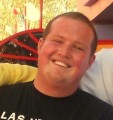Before I left my hometown Freiburg to start the 200km journey eastwards to the Swiss Capital, I adjusted my expectations. Having been raised in a European country, there is hardly anything special about small idyllic villages. Even if they are set at the foot of great mountain ranges covered in white. In the same way, ancient buildings are scattered around my own town like fast-food chains in the great country of America.
For this trip, my intention was to somehow be surprised and amazed by the atmosphere and the architectural flair of Bern. And I wasn´t about to be disappointed.
Since travelling by train is one of the most economical ways of moving within Europe and the Swiss are known for their punctuality, I decided to use this means of transportation.
Approaching the final destination, I glared out of the window to get a first impression. Observed by the setting sun, the train was just about to cross the Aare river which is circling the old town.
After a strengthening fondue served with fine Swiss wine, I went for a walk through the antique town.
Built upon arcades, the edification of the houses go back far into the 12th century. This was the time when the city of Bern had been founded by the dynasty of princes called the “Zähringer”. Back in the day, the place had been chosen for strategic reasons. On the one hand the river gave the city shelter from intruders, but also supplied water for the townspeople. Rapidly, the city grew to the most important place in the Old Swiss Confederacy. Disregarding an occupation by Napoleons troops, the city has never been involved in any military feuds. This is one of the reasons that led the UNESCO to declare the historic center a World Heritage Site in 1983. And you can tell why.
Arches are spread all over the old city of Bern making it one of the longest roofed shopping streets in Europe. Apart from 11 old fountains, emblematizing old (and current?) virtues, tourists can also gaze upon late gothic, baroque and medieval sites. Those include belfries, churches, memorials and the Federal Palace. At the central station, you can obtain Ipods prepared with an audio tour guiding you through the alleys whilst learning about all the historical facts.
For those who prefer rather adventurous things, I’ recommend you to stop by at the Bärengarten (Bear Pit) and say hello to the name patrons of the city. Or just jump into the Aare river to cool off.
But you shouldn’t visit during winter time, bears also adhere to their winter rest and the river might get a bit cold. I had to suffer through this experience myself (Luckily, I’m not talking about the swimming).
Now that I had been confronted with all the ancient buildings and the daily life of the people, I started thinking about how life must have been back in the day. It was just then when I catched a glimpse of a Starbucks tag placed underneath one of the arches behind an old lithic fassade. Pretty amazing how modern and ancient can be connected. This must have been what I missed in the USA…
But of course, a city cannot only be built upon old foundations. In 2005, the “Zentrum Paul Klee” was opened. It exposes almost 10.000 (watercolor) paintings and drawings by the late 19th-century artist Paul Klee. This marked my last stop in the city of Bern.
With all these impressions in mind, I was ready to start my journey back home. Turning my camera on and looking at all the pictures I had taken, I couldn’t help but smile: The city was indeed able to surprise and amaze me at the same time.
For a good choice of hotels with discount prices, visit Hotel in Bern for more information.

